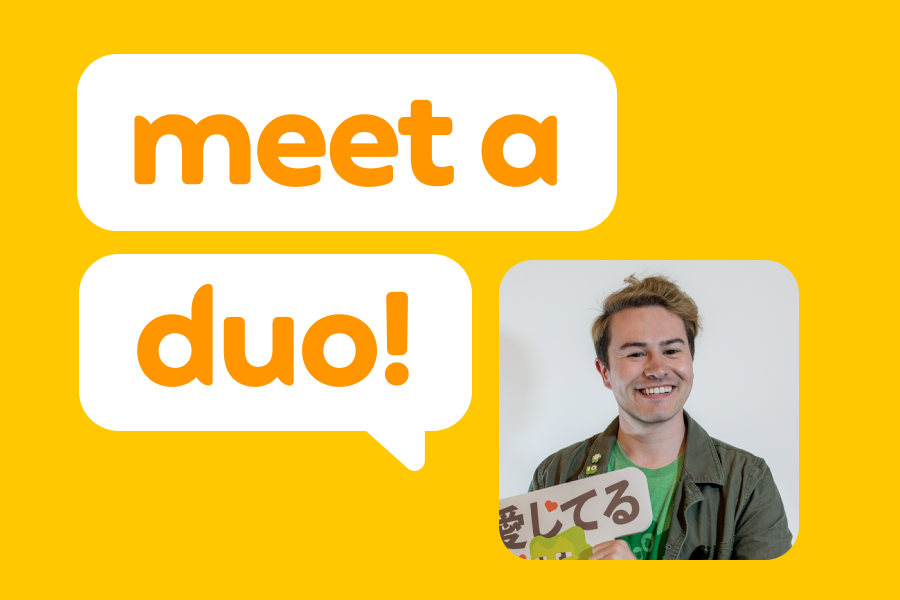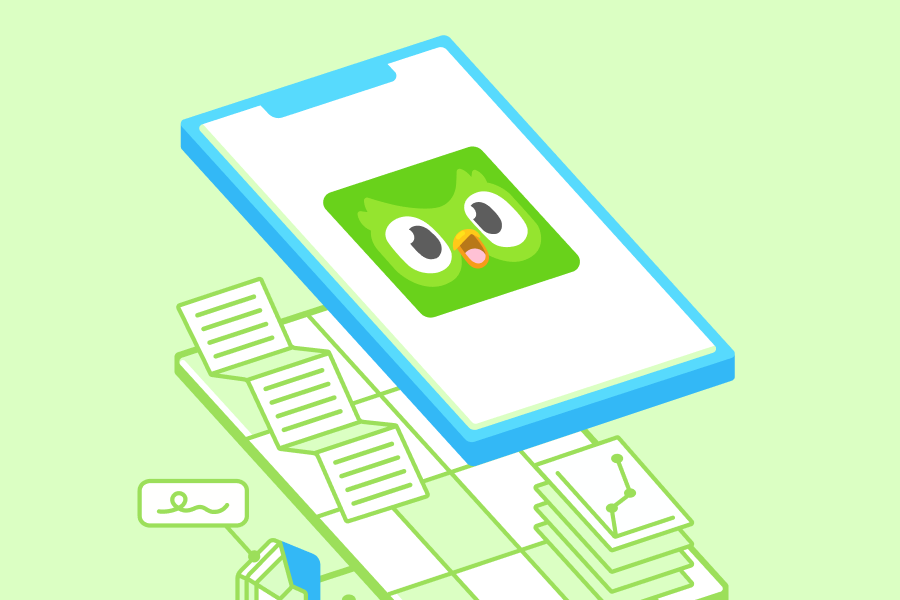At Duolingo, we pride ourselves on hiring individuals who are passionate about our mission and want to use their expertise to change the world for the better. To give you a peek into what it’s like working for Duolingo, we’ve asked our team members to share more about their experience at the company! Today, meet Parker, a Learning Designer (whose work you may have read on the blog!)

Why did you choose Duolingo?
After studying linguistics in college, I pursued a career that combined my passions for language and teaching. I taught English in the Czech Republic with the Fulbright program and then returned to Memphis, my hometown, where I taught middle school ESL. My students had all recently arrived in the U.S., mostly from Central America, and during their daily hour of ESL, they gained a new voice in a new home. I felt like an empowering force while teaching, and I’ve yet to find something as fulfilling as watching my students grow, but both pushes and pulls led me to Duolingo.
In the classroom, I saw just about every social issue in America come through my classroom door, which is, in a word, exhausting. I decided to shift to a career that would still allow me to work with language, education, and helping others, but with a more sustainable workload. Duolingo checked all these boxes and more. My work now expands to millions of people, including many of my students’ parents and grandparents; my work-life balance is incredible; and I’m surrounded by smart, kind, and dedicated people who share the same mission to teach the world well and equitably every day.
What are three words that describe Duolingo’s culture?
Collaborative, zealous, quirky
What was your first project at Duolingo and what growth have you noticed in yourself since you’ve started?
My first project was developing monolingual exercises for the English course for Spanish and Portuguese speakers. These exercises were important because they imitated immersion in a product where we couldn’t reproduce immersion. Fast forward two years later, and I’m now working on Duolingo Max’s Roleplay feature which can produce an immersive experience powered by AI! I’m also working with AI to produce those same exercises I started with, but this time at a much bigger scale. And just as Duolingo’s courses and technology have improved, so have I! Thanks to fantastic leadership, I’ve had opportunities to manage projects, ship features, and build my product and design sense. I’m grateful to Duolingo for paving the way for this growth, but I’m especially grateful to my students and colleagues in Memphis for investing in me at the very beginning to become an effective teacher.
What was it like making the transition from education and academia into tech?
Ultimately, I think I was at an advantage transitioning from education to an edtech company, but the nature of the work required some adjustments. For one, my coworkers are no longer twelve years old, but rather a mix of product managers, designers, and engineers, among others, who all bring their own priorities and perspectives to the table. Working for a public company that also seeks to teach the world means balancing return on investment, intuitive UI, clean code, and good pedagogy. This requires everyone in the room to act creatively under constraints—something that teaching actually prepared me well for!
I remember preparing for my interview and feeling my K12 teaching experience wouldn’t be what a tech company like Duolingo was looking for. But my time in the classroom taught me to adapt to unexpected setbacks, communicate to diverse groups, and come up with innovative ways to teach better. Two years later, I continue to bring these skills to the table at Duolingo!
What are some of the challenges you face as a Learning Designer?
I think most of the challenges Learning Designers face stem from the enormous number of learners engaging with our content. One of the biggest challenges when I started at Duolingo was a lack of qualitative feedback from learners. In the classroom, I could almost always tell which students didn’t “get it” by scanning the room. And with a little poking, I could figure out how to adjust my teaching to pull them in. With millions of learners, we’ve got to use A/B tests, metrics, and targeted user experience research to figure out where we’re teaching well and where we need to adjust. On a personal note, I felt very connected to the positive impact I was making when I was teaching—I could track my students’ growth by watching them build language skills in front of me. When you teach millions of people, you don’t get the same swell of pride when a student reaches their goals; however, hearing from learners about how they enjoy Duolingo is one of my favorite things!
What is unique about working at Duolingo?
Duolingo is unlike any other place I’ve seen because it combines the very best of tech and teaching. Coming from education, the perks, the benefits, the workspace, the culture have all blown me away. But what’s more is that the office is positively vibrating with a mission to do good in the world through education. Not everyone’s particular role is directly related to teaching or even to the app, but everyone in the building can connect their work to how we’re building the best education in the world and making it universally accessible. I think a lot of this boils down to the culture and size of the company. Many of my coworkers have been with Duolingo for over half of its lifetime which provides great perspective on where we’ve come from and where we’re going.
Additionally, I can see my work in the app pass across our CEO Luis’s desk for feedback in a way I probably wouldn’t see at a bigger company. If you break it down, there are thousands of daily active users per employee, which is larger than any classroom I’ve ever taught in, making my work feel especially impactful.
Read more Q&As with our employees, and remember to check out our careers page for current opportunities!



